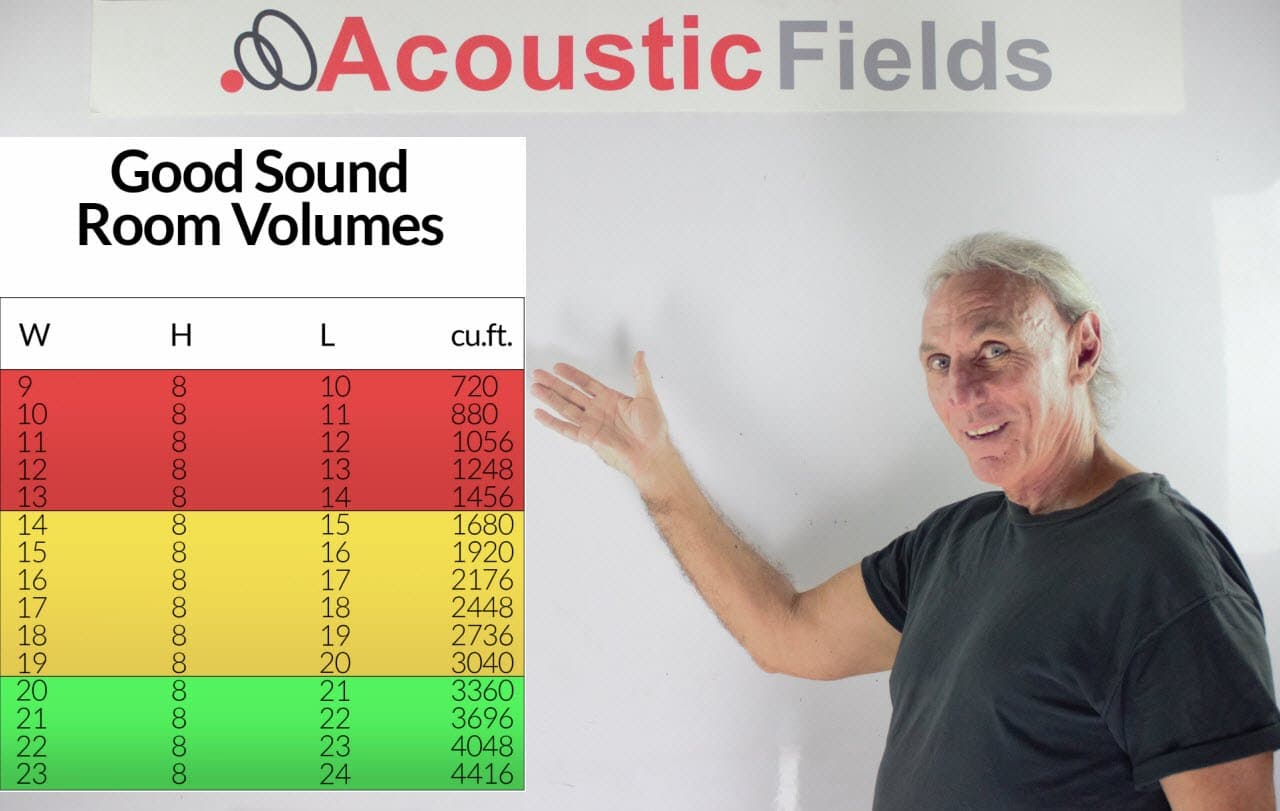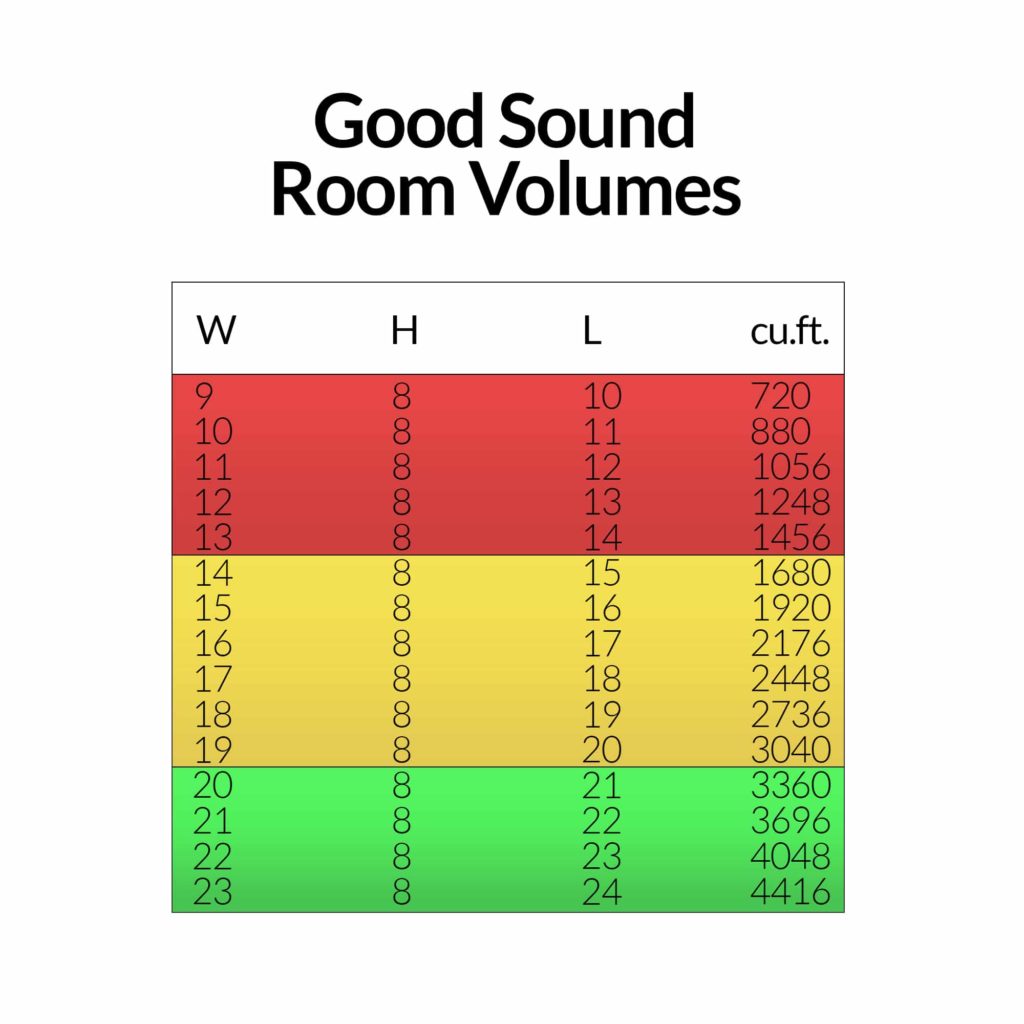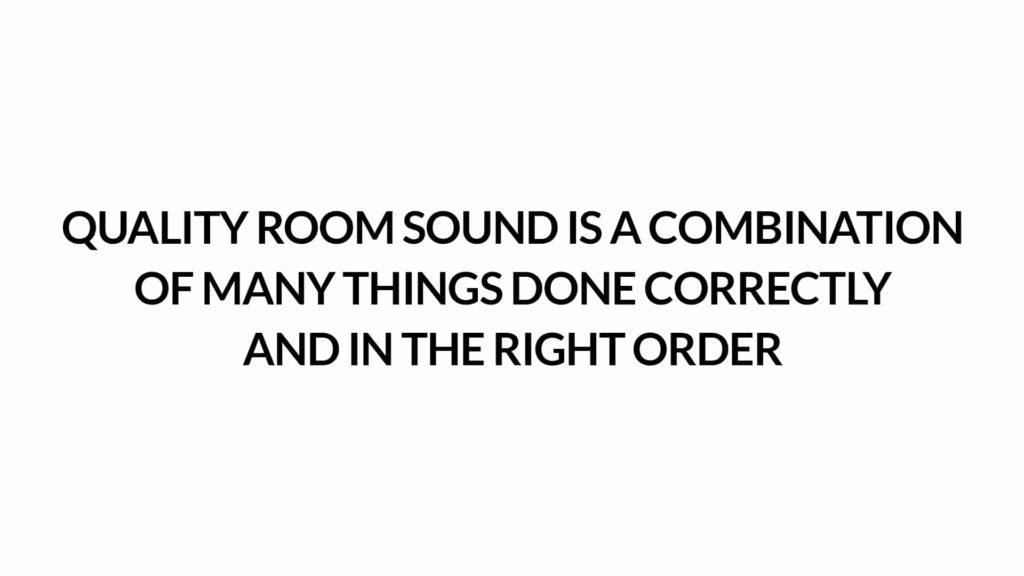Today we’re going to talk about quality sound in your room and how to achieve it. It’s a combination of doing a lot of little things correctly and in the right order. Let’s look at some of those things and get an idea of the priority and issues involved. The following are seven items of a list of 121 that we use when we build and design rooms. That gives you an idea of the complexity and the issues that are involved.
First and most important, room dimensions and volume.
I can’t tell you how many times people send me in their room sizes and they tell me that this room is being used for this usage. And the usage and the room size just simply don’t work out. Too much energy, too small of a space, so matching the room size and the volume of that space to the usage is critical.
A live room is different than a voice room. A control room is different than a listening room. There are some similarities but each usage has a particular volume requirement in order to work properly. So defining room dimensions and volume is critical.
Secondly, material composition and densities.
What you make the room out of is very, very critical. Because sound takes on some of the characteristics of the surfaces that it strikes so choosing the right materials has a direct impact on the sound quality. Here’s a good example, a lot of people use drywall. We use no drywall in any of our room builds because drywall has a particular sound quality to it especially in the middle frequencies where our vocals lie. We don’t use any drywall in our room builds.
Isolation techniques.
Sound that’s generated within the room must stay within the room. Sound that’s generated from outside the room must stay out of the room. In order to achieve that, we use isolation technologies and construct barriers. Quantifying that goes to noise issues. How much noise or sound in the room do we have to work with, how much external noise do we have to work it? Putting a figure, a number to the amount and the frequency is critical to designing the isolation technologies that comprise the barriers. If you don’t get the numbers right, if you don’t build the right barrier, you’re going to have bleed. And if you have bleed, you haven’t accomplished your purpose and you’ve spent all that money.
A lot of times in barrier technology, once you design the barrier and install it and it doesn’t work, there’s no way to fix it. You almost have to tear it down and start all over again. You can add to it in a lot of situations, that then again depending on frequency and amplitude. Well, frequency management, it is so critical to get the low end right in your room that’s why I spent 8 years developing our carbon technology. I was so unhappy with the low end, I was so unhappy with the products that were there in the marketplace that claim to be bass traps but aren’t even close to that. We’ll talk about that term a little later today.
Low frequency management is critical.
If you don’t get the same definition, clarity, and separation in the low end that you get with your middles and highs, you’re not doing the right job.
Middle and high frequency management.
What’s our two tools within the room? Absorption and diffusion. Those are the only two technologies that we have. A lot of people misuse those. They over absorb, they under absorb. They don’t choose the right rates and levels of absorption. Sidewall rates and levels are a little bit different that front and rear walls. All these variables have to be taken into consideration. There also has to be a balance between the direct straight line energy from your monitors and the reflections off the walls, particularly the side walls when you’re focused on sound stage. Creation, separation, definition, you need that correct balance. There’s time signatures to the reflected energy that must be obeyed if you want a sound stage that has clarity, definition and separation.
Diffusion, diffusion, diffusion.
Walk outside, listen to sound. Come into a room and listen to sound. The difference is attributed to diffusion in the natural environment. That’s the real sound we’re after in our rooms. Our goal is to make the room go away. All the surface boundaries go away. So how do we do that? Diffusion is the technology that we use. A lot of people don’t understand diffusion. A lot of people don’t know how to use it. Contact us, we’ll help you. We’ve been doing it for 25 years.
So, in summary, there’s just certain room volumes and you can see with the following graphic, anything below 15 cubic feet is almost a no go for everything. Less than 3000 cubic feet is almost a no go for a lot of things so you have to be careful about how you match the room size to the usage.
And then in the next graphic, remember that quality sound is a combination of doing a lot of things right correctly and in the right order.
In Summary
To learn more about room acoustics please sign up to download our free ebooks and video series on room acoustics here. And please let me know if you have any questions at any time.
Thanks
Dennis Foley









